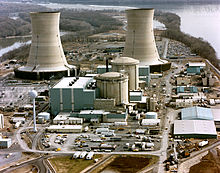 Emergency vents that U.S. officials have said would prevent devastating hydrogen explosions at U.S. nuclear plants were put to the test in Japan — and failed, according to experts and officials with the company that operates the crippled Fukushima Daiichi plant.
Emergency vents that U.S. officials have said would prevent devastating hydrogen explosions at U.S. nuclear plants were put to the test in Japan — and failed, according to experts and officials with the company that operates the crippled Fukushima Daiichi plant.
The failure of the vents calls into question the safety of similar nuclear-power plants in the United States and Japan. After the venting failed at the Fukushima plant, the hydrogen gas fueled explosions that spewed radioactive materials into the atmosphere, reaching levels about 10 percent of estimated emissions at Chernobyl, according to Japan's nuclear-regulatory agency.
Venting was critical to relieving pressure that was building up inside several reactors after the March 11 tsunami knocked out the plant's crucial cooling systems. Without flowing water to cool the reactors' cores, they had begun to overheat.
U.S. officials said early on that U.S. reactors would be safe from such disasters because they have new, stronger venting systems. But Tokyo Electric Power Co. now says Fukushima Daiichi had installed the same vents years ago.





 The Trump administration has said it is immediately pausing all leases for offshore wind farms already...
The Trump administration has said it is immediately pausing all leases for offshore wind farms already... International Atomic Energy Agency (IAEA) Director General Rafael Grossi said on Friday that an IAEA team...
International Atomic Energy Agency (IAEA) Director General Rafael Grossi said on Friday that an IAEA team... Two fossil-fuel billionaires with close ties to Donald Trump bought millions of shares in the company...
Two fossil-fuel billionaires with close ties to Donald Trump bought millions of shares in the company... The Trump administration on Thursday announced new oil and gas drilling off California’s and Florida’s coasts,...
The Trump administration on Thursday announced new oil and gas drilling off California’s and Florida’s coasts,...






























